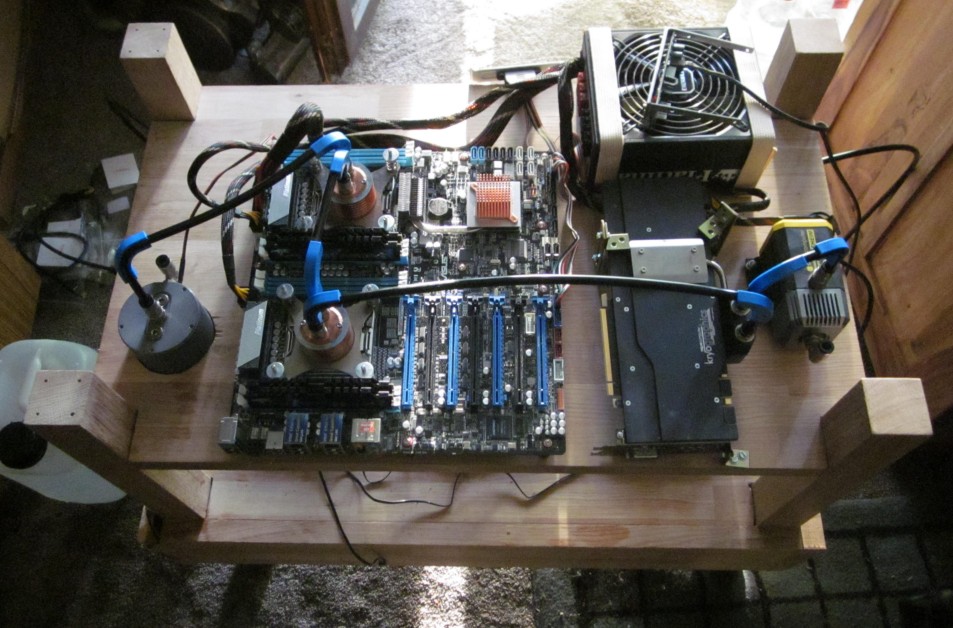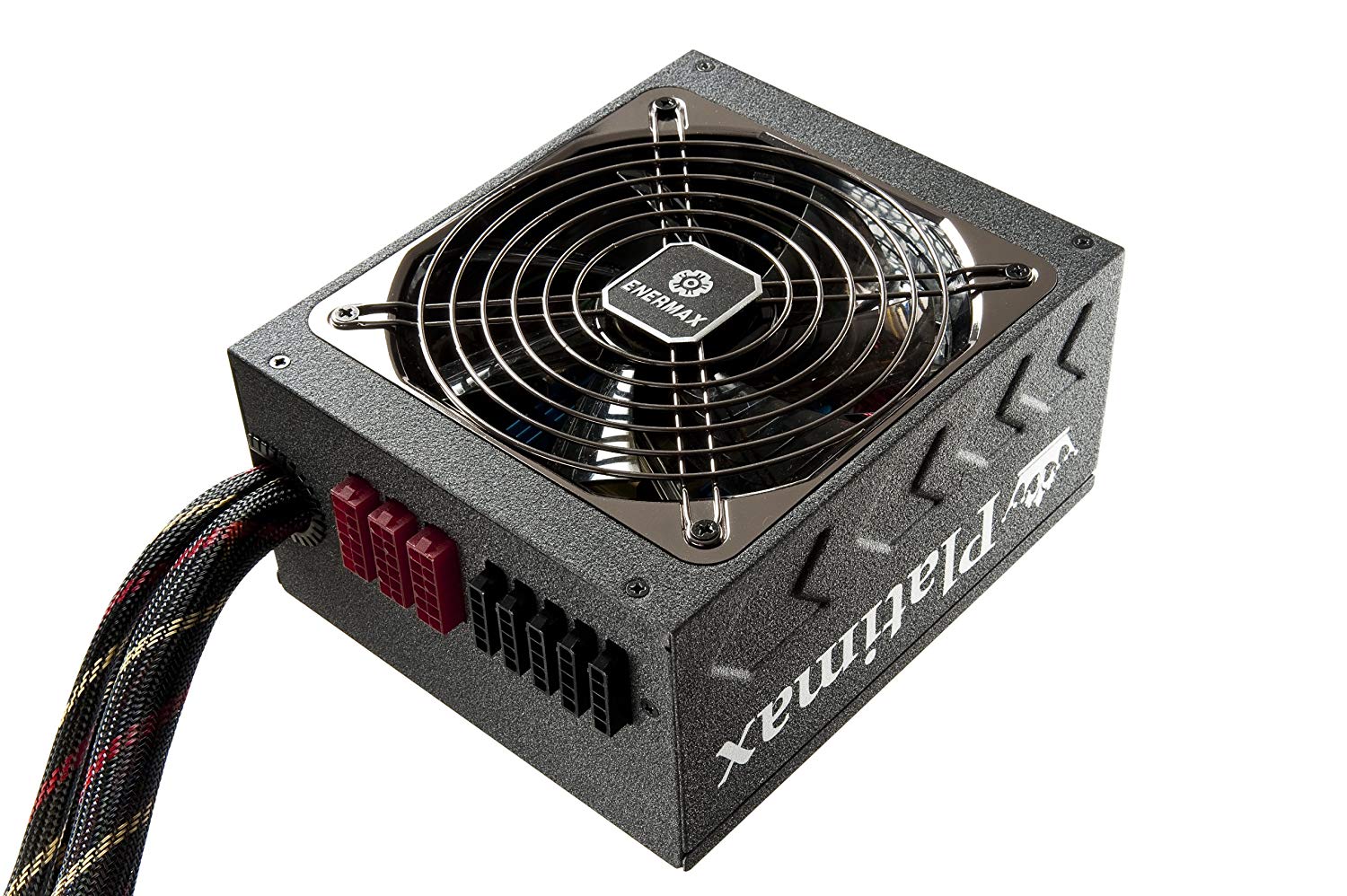This post has been sitting in my queue for a little too long, but maybe it helps someone out there. In 2016 I last upgraded my PC and went for a beefy system that would speed up my renders and game engine lighting builds (in this case, the more cores, the better).
I went for a dual socket motherboard and two Xeon CPUs rated at 130 Watts each. And I added the back then top-of-the-line GPU, an NVidia GeForce GTX 1080, rated at 180 Watts.

So how big should my PSU be?
I happen to have a power meter that tells me exactly how much power my PC is drawing, so here’s the overview:
| Count | Component | Actual (1 piece) |
Rated (1 piece) |
Rated (total) |
|---|---|---|---|---|
| 1x | Asus Z9PE-D8 WS | ? | ? | ? |
| 2x | Intel Xeon E5-2680 (8C/16T 2.7 GHz) | ? | 130 W | 260 W |
| 1x | Asus GTX 1080 FE | ? | 180 W | 180 W |
| 1x | Samsung SSD 850 Pro | ? | 2 W | 2 W |
| 2x | Western Digital Caviar Blue | ? | 6 W | 12 W |
| 3x | BitFenix Spectre Pro 230mm fan | 2 W | 4 W | 12 W |
| 1x | Eheim 1048 water pump | ? | 10 W | 10 W |
| 1x | M-AUDIO BX5 D2 active speakers | 13 W | ? | 26 W |
| 1x | Samsung 20" TFT | 28 W | 36 W | 36 W |
| 1x | Samsung 24" TFT | 29 W | 48 W | 48 W |
| 1x | EIZO 27" TFT | 42 W | 24 W | 24 W |
| Total | ~610 W | |||
Yeah, my Samsung TFTs claim 36 Watts and 48 Watts but then use only 28 Watts. The Eizo TFT I selected specifically for its eco-friendliness claims 24 Watts but actually draws 42 Watts, twice its advertised power (on maximum eco settings — 65 Watts with eco mode off) :-/
Choosing Power Supplies 101
Power supplies only use the amount of power your PC components draw from them. So buying a 1000W power supply for a tiny workstation does not mean you’re burning through 2 Kilowatts of power constantly.
However, efficiency varies with load, generally following a curve that is highest at around 50% load (you can find this curve on the box). So if you pick a power supply that’s exactly twice the average power draw of your workstation, it will be sitting in its sweet point most of the time.
Besides the efficiency curve, there are various efficiency levels you can get. The "80 Plus" certification requires that at least 80% of the power drawn from the wall socket gets to your PC components and 20% or less are wasted inside the power supply. The highest certification is currently "80 Plus Titanium" which gets you about 95% efficiency.
My Actual Power Consumption
And now for the result. What’s the actual power consumption of my system, rated for 610 Watts on paper?
| Task | Actual Power Consumption |
|---|---|
| Idle, Gentoo Linux, KDE 5 Plasma | 246 W |
| Idle, Windows 10 Professional | 248 W |
| Blender Cycles (100% load all CPUs) | 415 W |
| FurMark (100% GPU load) | 425 W |
| Fallout 4 | 363 W |
| NieR – Automata | 385 W |
This includes my 3 TFTs and 2 active speakers. My workstation alone only draws 121 W when idle and 300 W at the highest I could get it.
I didn’t know this at the time I purchased my PC components (and the power meter, too), so I now have a big yawning 1000W power supply when a 500W one would have been more than sufficient. At least I went for one with the "80 Plus Platinum" certification, so it (probably) will stay around 90% efficiency at my system’s current power consumption

So there you have it. All those calculate your power supply sites I checked also suggest those 1000W monsters for my system. Yet a good choice would have been half that.